Pets, People and Persistent Pain – Information Event
So many people who live with persistent (or chronic) pain find that having a companion animal in their life to be an active and important part of their pain management strategy.
In this “information event” we explore how and why animals prove so helpful, how we can manage the needs of both our pets and our pain management needs, and where to find help if needed.
We also look at how to get the benefits of contact with animals even if you don’t care for one yourself.
-
How do Animals help us?
What are the most important things that sharing your life with a companion animal do for your pain experience? They might include:
Motivation – the need to care for that animals needs over and above our own means we have to get up and move and keep going. This means we have to consider the things we can do that help us manage our pain. You have the additional motivation to keep up with the lifestyle that keeps us healthier and manages our pain – such as mediation practice, psychological techniques, pacing, stress reduction, reframing and mindset and most of all fun, love and emotional connection. It means we have to think of solutions that make things less challenging, and often reduces the chance to fall into a spiral of pain and fear and depression which is sadly easy for human shaped people.
Movement – having a companion animal makes us move – even if it’s a tortoise! Some companion animals need higher levels of movement like dogs or horses, but even the smallest pet friend needs cleaning and caring for that gets us moving. Of course dogs in particular are wonderful companions for walks and games and bring in a very large element of fun into movement.
Love – unconditional both ways. This reduces loneliness – the comfort of having another heartbeat in the house if you live alone. Even if you don’t, having someone you can talk to, who requires nothing from you and who will not judge or reprimand you is hugely important. Having someone who will love you whatever you think of yourself; who measures worth on their love for you not any achievement or characteristic can be a major step on the road to living a happy life with yourself.
Wellbeing – studies show that petting a dog or cat can reduce heartrate and blood pressure and increase serotonin and dopamine and a myriad of other benefits that have probably yet to be studied and published. They have other positive effects on both our mental and physical health as well and any animal carer will say that while there are times they undoubtedly can cause stress, they are very much on balance a great assistance to managing pain and living a good life.
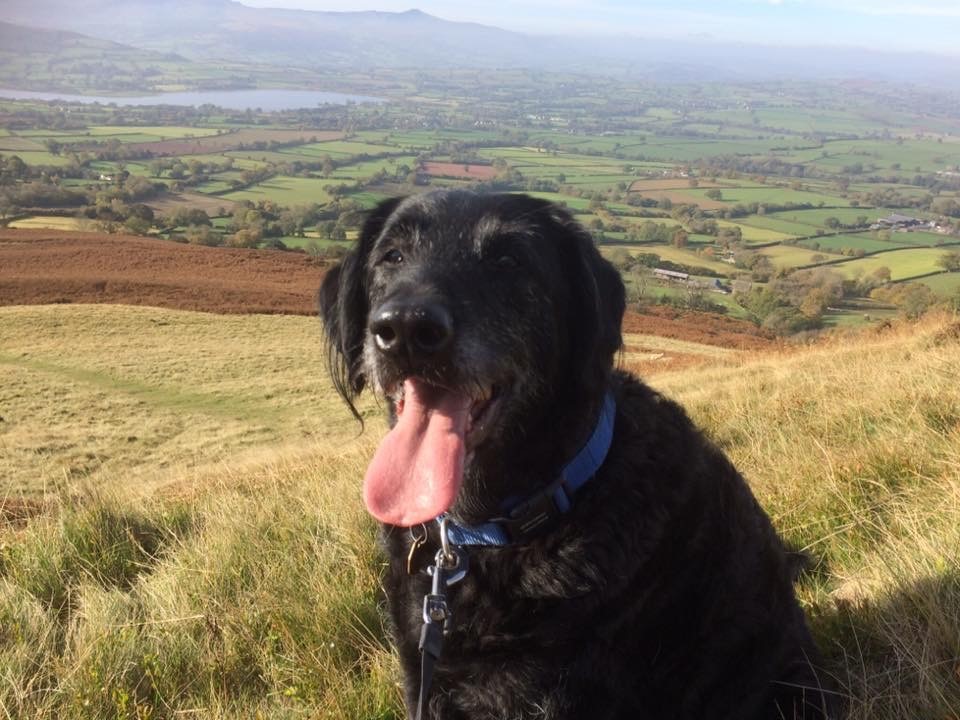
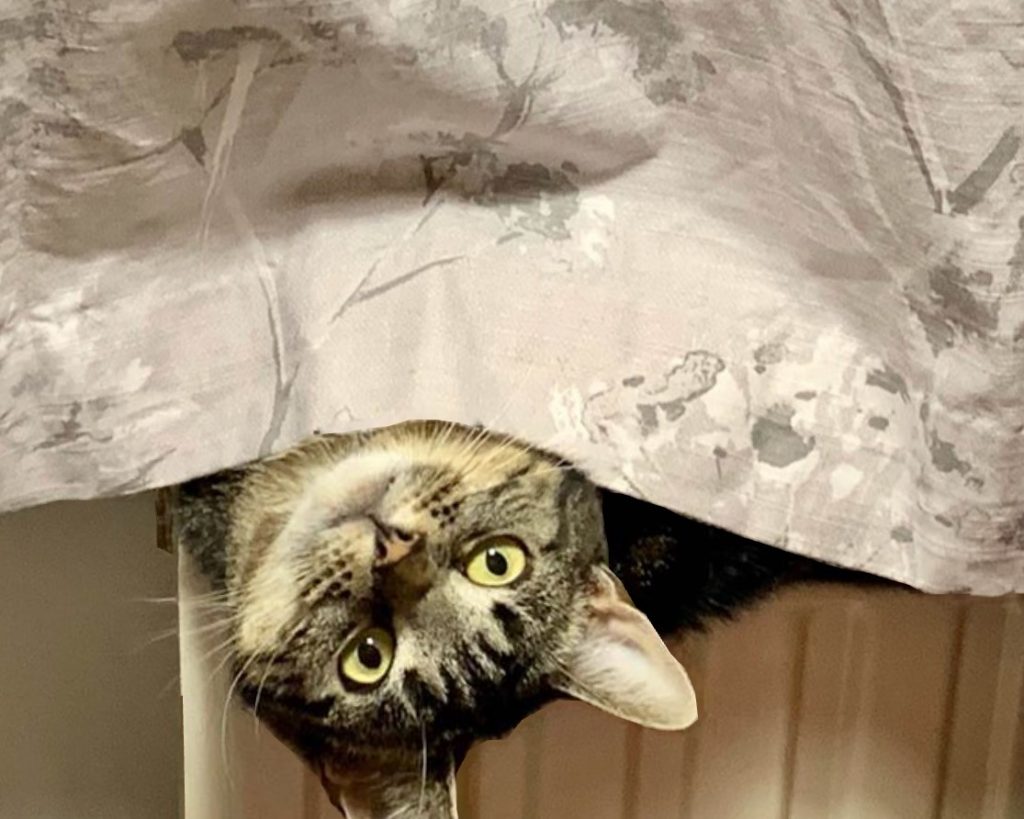
-
What Pet is right for me?
That depends! Bringing a pet into your life is never a light decision, but when you live with persistent pain then there are additional things that need to be considered. Of course, sometimes pain comes after the pet – and thats when we have to be creative and adaptive in looking after both our and our pets needs – this is covered later.
Do your research – never get a pet without taking time to look into their needs and what adaptions you will be able to make (or afford). Often you may well find that things are not as unlikely as you once thought!
The animal’s welfare is the priority but there are many and varied ways we can make sure their needs met while not causing ourselves too much difficulty.
You may also have to fight your own prejudices, preferences and wishes – large active dogs might be your hearts desire, but don’t forgo having a dog at all because you forget to consider a smaller less active dog or an older dog – the rescue centres are full of OAP dogs just looking for a quiet sofa and steady walks and they will love you forever for providing that. Equally a smaller pet like hamster, bird, spider or reptile may not be your first choice but can still provide huge enjoyment and love – think outside the box!
The PDSA has covered this brilliantly on their website with a quiz that helps you think things over – and is as always a great source of trusted information on many different areas of pet care.
Unfortunately finances do come into our decision making process – pets can be a financial burden in various ways and part of your research into which pet to bring into your life should be the cost implications. Costs are also beyond day to day care and the biggest threat is veterinary treatment. Pet insurance isn’t cheap but can provide a safety net if your pet does need vet treatment, and if you are on certain benefits the PDSA or Blue Cross may be able to help.
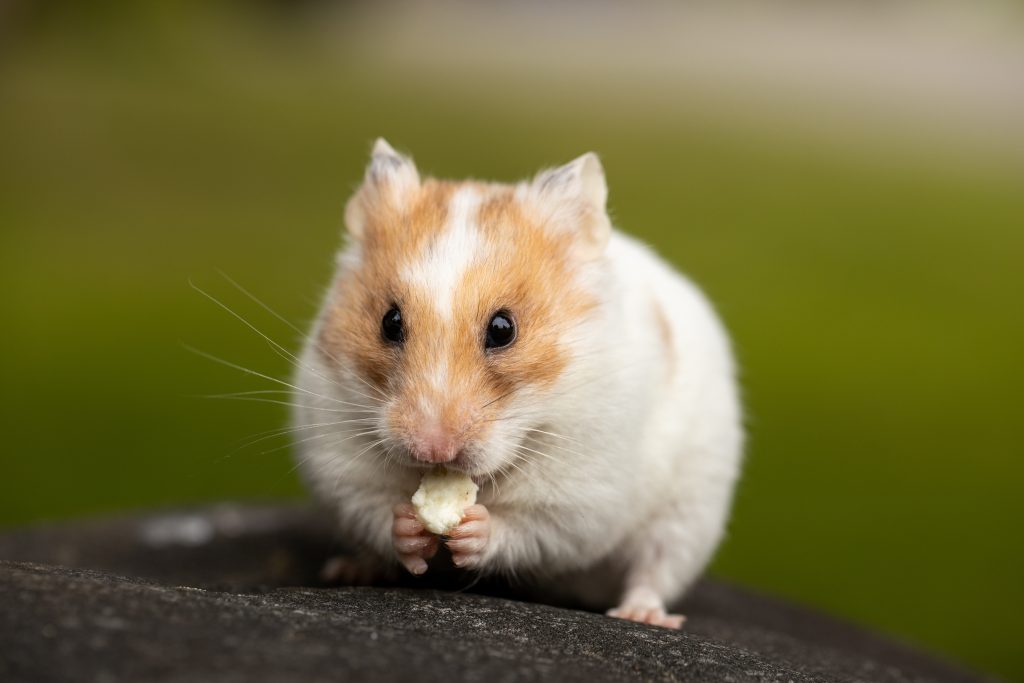
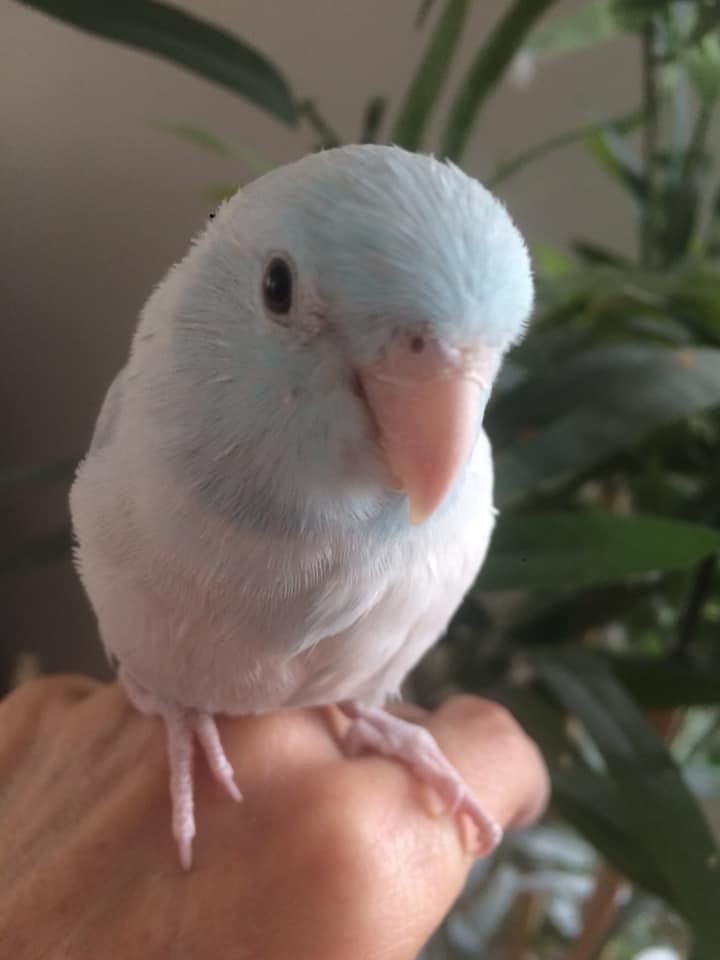
-
Making sure your pet has its needs met without making things harder for you.
It’s not always easy or straightforward to keep a pet when you have persistent pain – while they can do all the good things mentioned above, they can cause stress or problems with their needs or behaviour.
There are usually solutions to these issues, these are some options, but there are many more!
Exercise.
Exercise for dogs can seem to be a big problem, but these days there are increasing numbers of dog walking services available, doggy day care and also enclosed safe fields for dogs to exercise in. They can be hired by the hour, on your own or with others. Hydrotherapy is another idea – swimming or underwater treadmills are good exercise for dogs and there are a lot of pools who offer this as a service as well as for rehab reasons. Sometimes you can find natural water that is safe and easy to access.
Professional Dog Walker Association
Often dogs need mental stimulation or enrichment rather than miles and miles of walking – it’s worth taking advice on this for your particular dog, but there are some wonderful ways to ensure enrichment in your dog’s life without it being overly physically challenging for the human partner. These ideas can also be adapted or used for most other animals – it can be fun and interesting to think of ways they can be used to enrich both your lives….
These could include:
Scent work/tracking (any mammal certainly)
Even for horses!
Positive reinforcement training – always very enriching and engaging and has the benefit of better training – remember to take the food rewards out of the animals food allowance, fat pets do no one any good!
Snuffle mats– many options on the market, to make at home or use your environment – remember to take the food rewards out of the animals food allowance, fat pets do no one any good!
Hide and Seek – around the house or garden with food or toy treats – some animals thrive on this interaction and it can be fun!
Agility/assault courses – these can be anything from rented professional agility courses, to clubs to fun stuff you make in your own house or garden or on short walks – use your imagination but keep yourselves safe.
Ball throwers – many and varied options (care must be taken to not over stress the dog)
This is a good article about enrichment in zoos – can you adapt the ideas for your own pet?
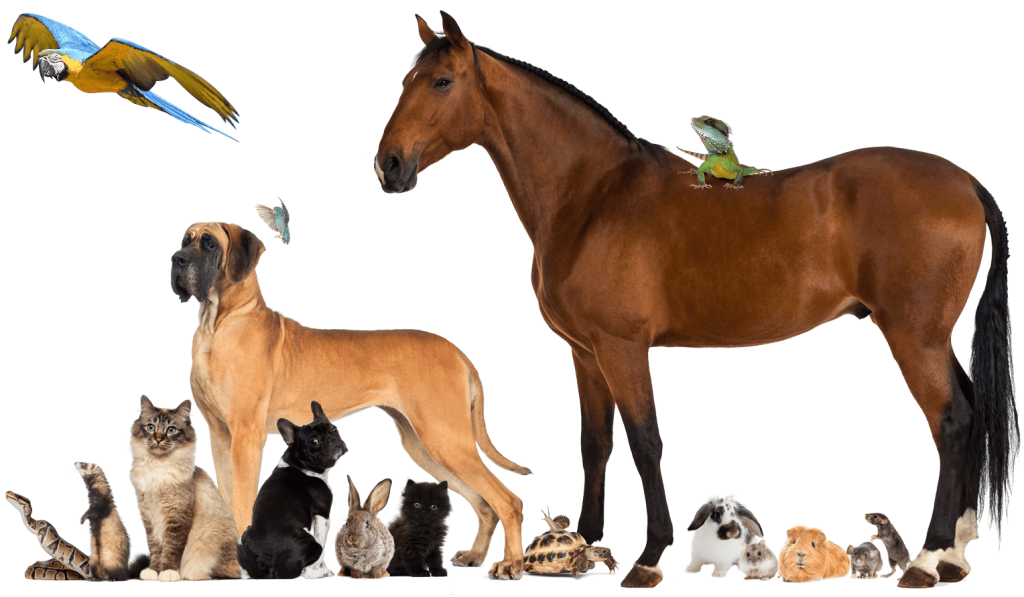

Dogs can run in safe fields you can hire or with dog walkers
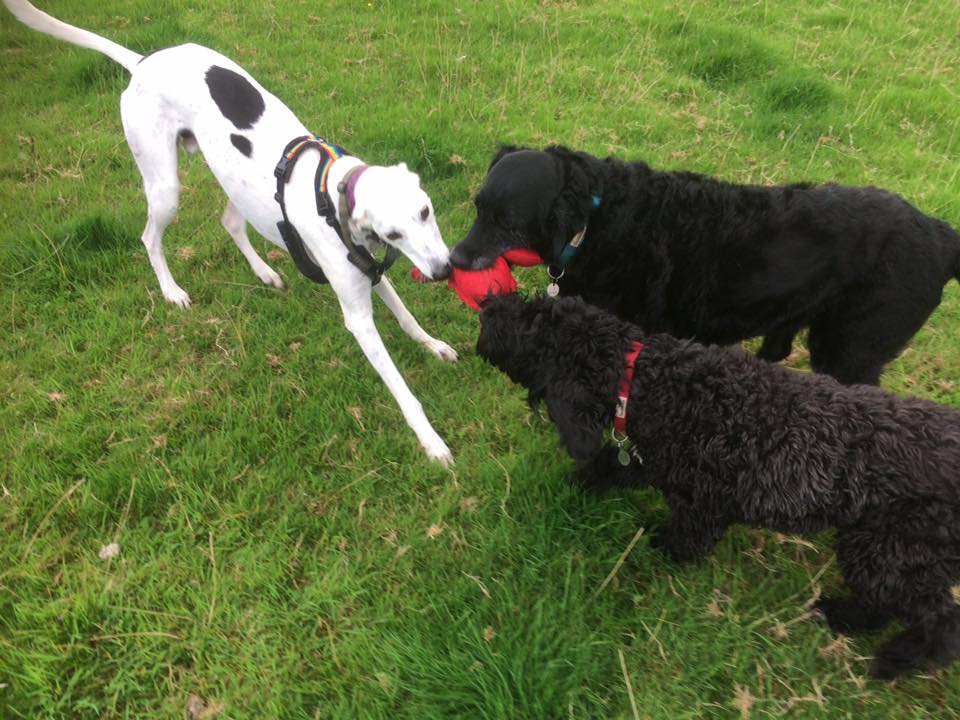
Dogs play with a tug toy, even small gardens can be hugely enriching with some creativity!
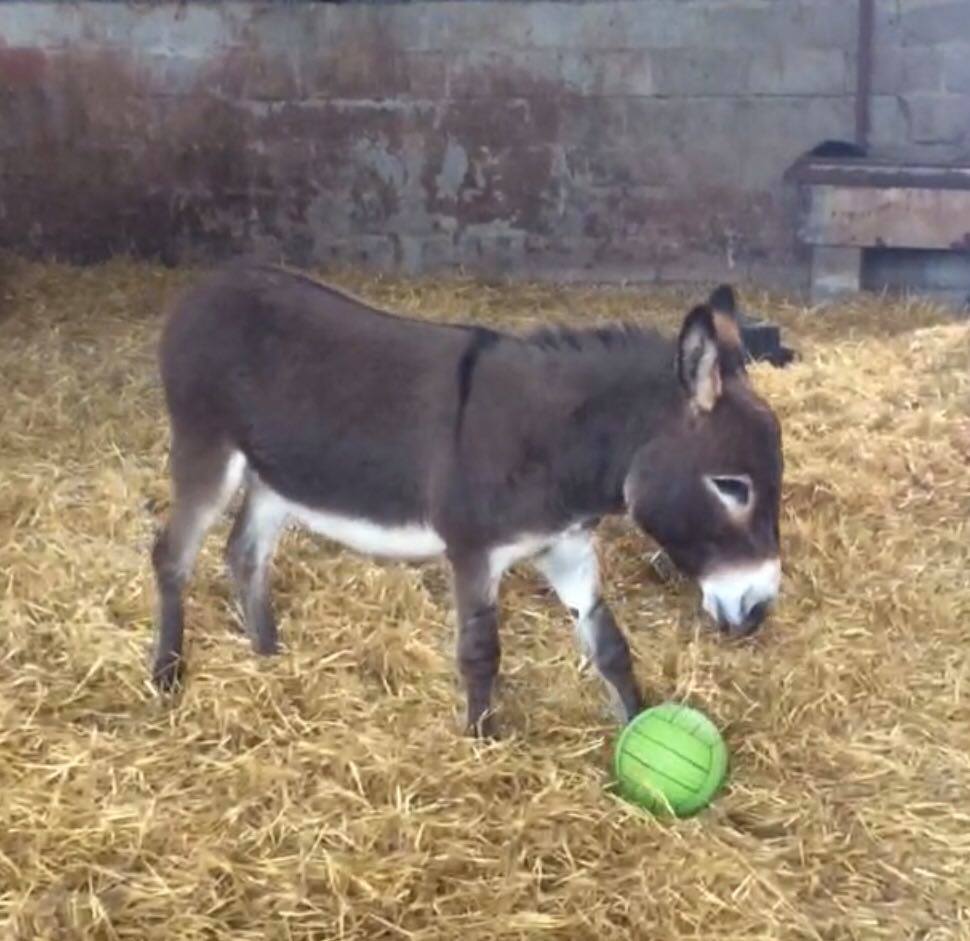
Maverick the mini donkey learning to play with a football
-
How to find help?
There is a wide range of help out there for animals – and much of it on a local level – its always worth checking any prospective assistance with your own vet as they will usually be a trusted source of recommendations. Anybody you bring in to help you should be accredited with their professional body and have proper insurance cover.
It’s always best to address behaviour or training issues before they get too challenging, this can save a lot of heartbreak, stress, money and pain – luckily in the UK we have highly qualified clinical animal behaviourists trained in the latest science/evidence based methods of training. These Behaviourists can help to understand why your pet might be having challenges and work with you to sort out the issues and help you train your pet using kind and effective techniques. They can be found via their professional associations here:
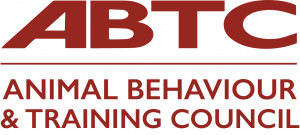
Help you can trust!

Always ask for proof of accreditation and insurance, anyone can set up as a “behaviourist” make sure they are correctly trained and accredited.
-
What happens if I can’t keep a pet?
Not everyone is in a position to have an animal living with them, but this doesn’t mean that you can’t get the benefit of having contact with an animal. There are many and varied ways of getting animal contact, though it’s important to always ask the keepers permission to interact and NEVER feed any animal without the keepers approval as this can be very dangerous to the animal (especially horses and other grazing creatures).
Meeting dogs in the local walking spots – always ask permission before you touch a strange dog – and know how to do so when you do. See here for advice:
Find friends or neighbours who have animals with whom you can spend some time. Studies have shown that even short periods (say 15 minutes) spent with animals can have very positive effects on chronic pain levels. (refs: 1 and 2)
There are qualified Therapy Dogs and other animals who visit various places such as care homes and you may be able to arrange a meeting.
There’s an increasing number of opportunities to visit animals such as Dinky Donkey walks or cuddle, grooming and game sessions, Pig Picnics, Alpaca walks etc – these do have a cost but they might be well worth it. Most such businesses will be happy to make adaptions to any disability or requirement. See Good Day Out in the Brecon Beacons – they also do Zoom visits!
There are also charities such as The Cinnamon Trust which help to connect people who can walk or care for animals (mainly dogs) for those that cannot themselves through old age or disability or sickness – this may be a way of getting your animal time and the benefit of volunteering and social connection.
There may well be local charities doing the same thing, and local ads or Facebook groups might be a good way of connecting with those with similar needs (please be safe and sensible).
There is even a website set up especially to link up those who need dog time with those who need dog walkers or care, called “Borrow My Doggy” which might be worth checking out, address checks etc are required for safety, but there is a fee involved with membership.
There are also “Animal Experiences” on AirBnB – a myriad of opportunities, from meditation with horses, walking with Lamas, yoga with goats or bat watching…all have a cost but AirBnB’s review system keeps this safe if you exercise the usual caution. Their animal welfare requirements are good as well.
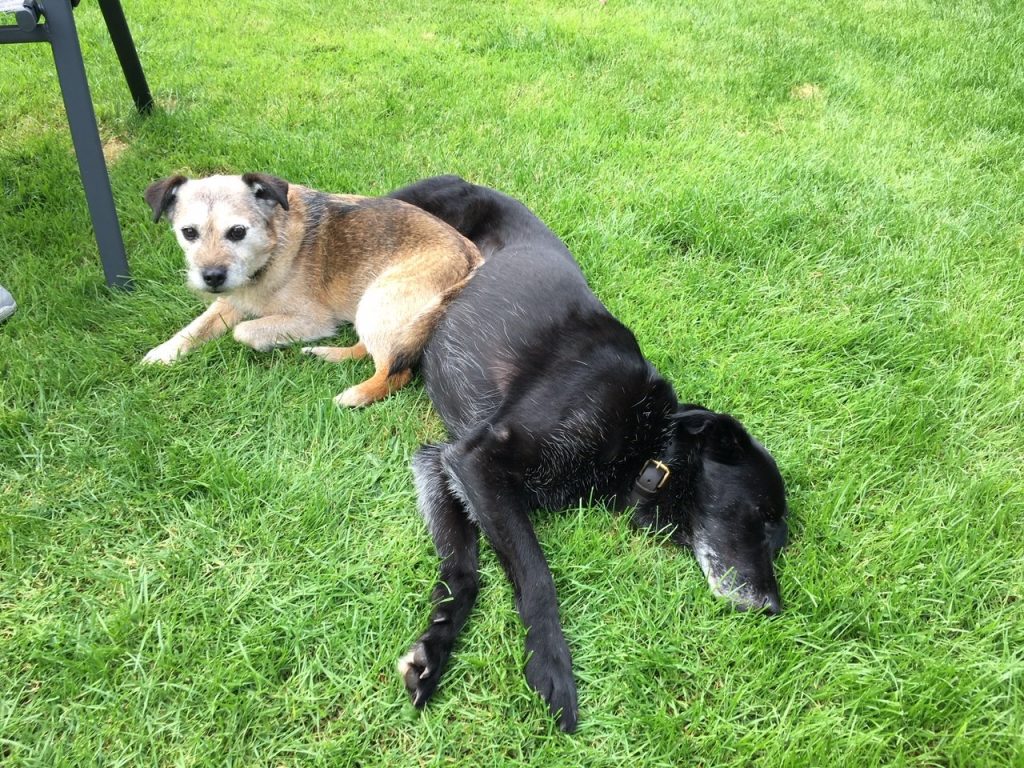
Getting your dog cuddles with friends pets….
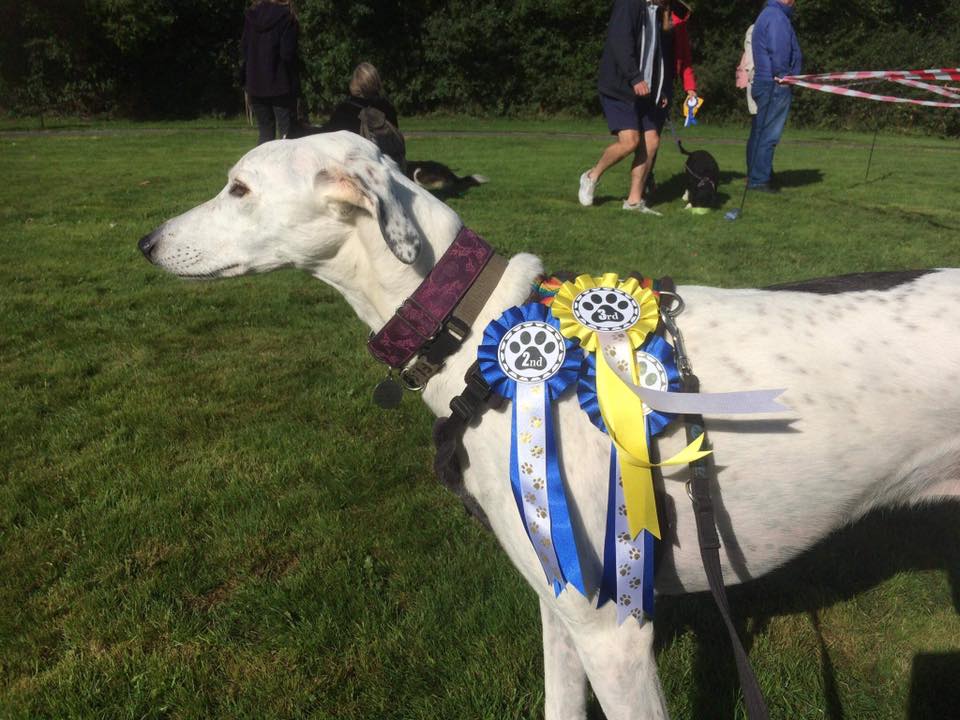
Shows are a good place to meet and spend time around animals
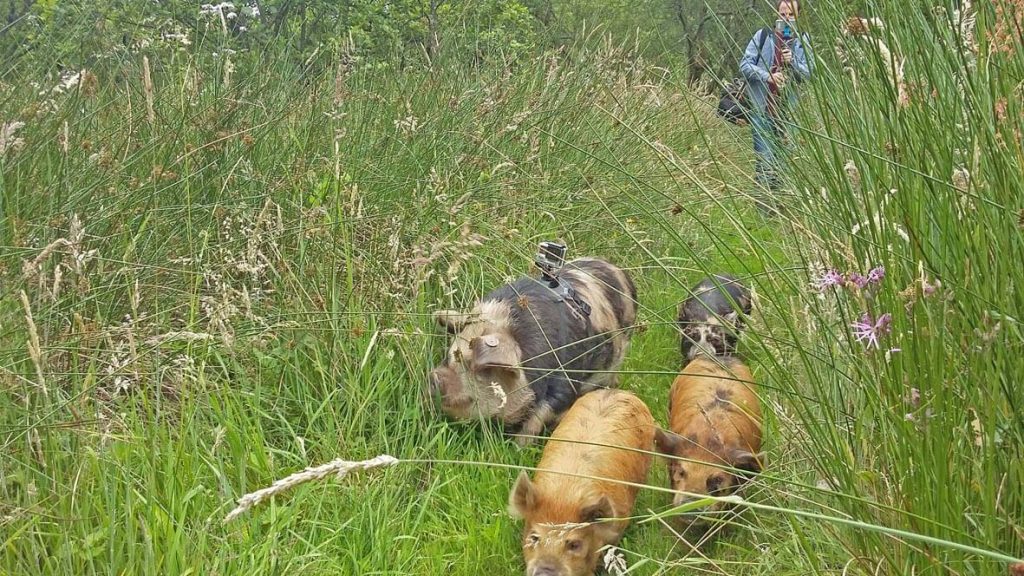
A Pig walking outing with Good Day Out
Dinky Donkey walking in the Brecon Beacons with Maverick and Goose from Good Day Out.
-
Horses
If you are a horse lover, there are many options from finding local horses to watch through to owning your own horse – and many horse owners later find themselves in pain and not sure how best to cope.
Finding local horses to watch and even interact with is lovely – but please, again, remember that no equine should be fed or handled without the express permission of the keeper – even grass can be harmful for animals on a special diet. Big herd animals can be dangerous if they think food or danger is involved so please be careful and make sure there is a barrier between you and the animals if possible.
Local riding schools and Trekking Centres will usually be able to make accommodations for any challenges with pain, lessons can be part ground work, part ridden, or pacing can be used during the lesson to reduce any flare ups. Just communicate your needs clearly and don’t be afraid to ask for a pacing break. Riding isn’t the only thing to do with horses – much fun can be had with horse agility exercises which are done unmounted, and much pleasure can be gained from grooming and spending time being with equines.
There is an increase in the availability of equine assisted therapy as well which might be worth investigating.
You could also volunteer with Riding for the Disabled – they are often looking for people to help out in various ways.
While keeping your own horse is possible for some, there are other options that might not be obvious – an increasingly popular option is a horse “share” where a keeper will advertise for a “sharer” for their horse if they need help riding or caring for the horse– the individual requirements differ but a share can involve a financial input in return for riding or a practical input. A contract is a must to protect all parties.
If you own your own horse and pain challenges are making things complicated for you there are many options that can help to avoid you selling your horse if you do not wish to. From finding a loan home, full livery, working Livery, a sharer to adapting the way you keep your horse to help make things easier for you – whether that is turning the horse out 24/7 or bringing them onto a yard from turnout.
I (Niki) quickly learnt that riding was not the only fun and connection I could have with my horse and learnt a whole new way of training my horse to make life easier for both of us. We do a lot of horse agility and play together. Sometimes its convention, peer and self-pressure that stops us enjoying our time with the horses and we just need to step back and reframe the situation. Reassessing our goals is also part of this. Don’t be too proud or stubborn to ask for help, think of adaptions and solutions rather than punish yourself. Always remember that horses have no ambition; they just want food, friends and freedom to express their natural behaviours.
Refs:
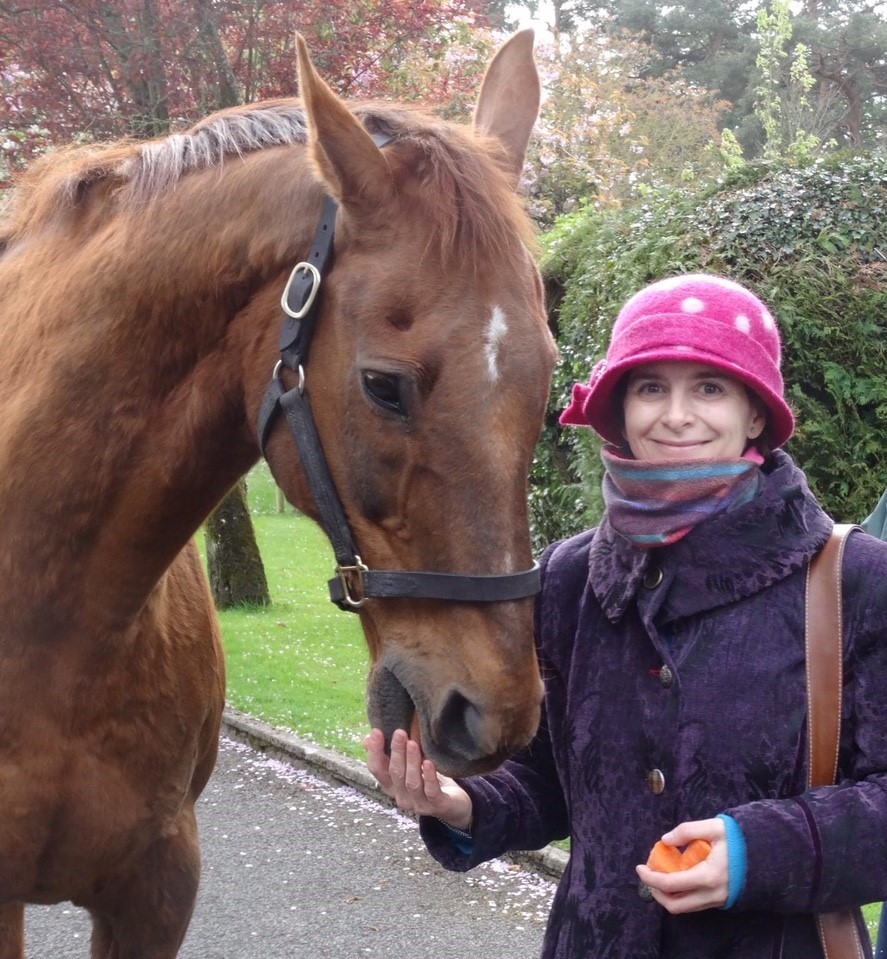
Visiting Ex Racehorse Beef Or Salmon at the Irish National Stud
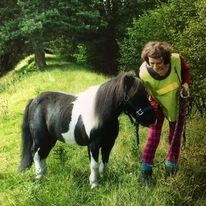
No matter the size of horse, walking out can be a good way to exercise and bond – riding is not the only fun to have with your horse
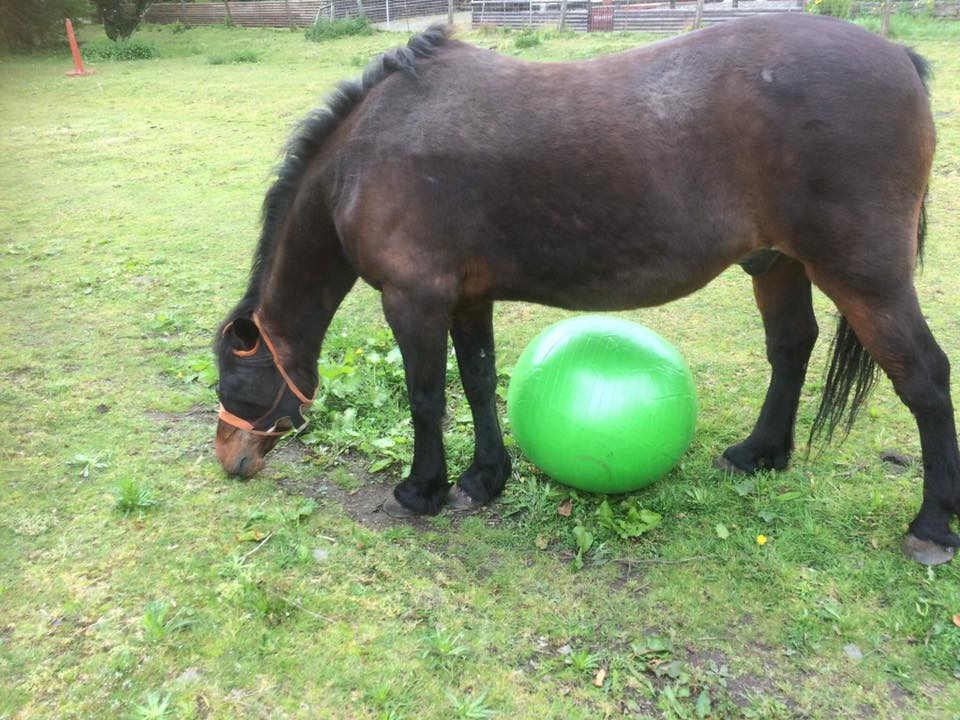
Enrichment Play with horses – a gym ball in this case – supervision recommended!

Positive reinforcement training “Clicker training” can be highly rewarding for horse and carer especially when time and energy is limited
Help keep Footsteps Festival free
We are raising £10,000 to support Footsteps Festival so it remains free to access for everyone…